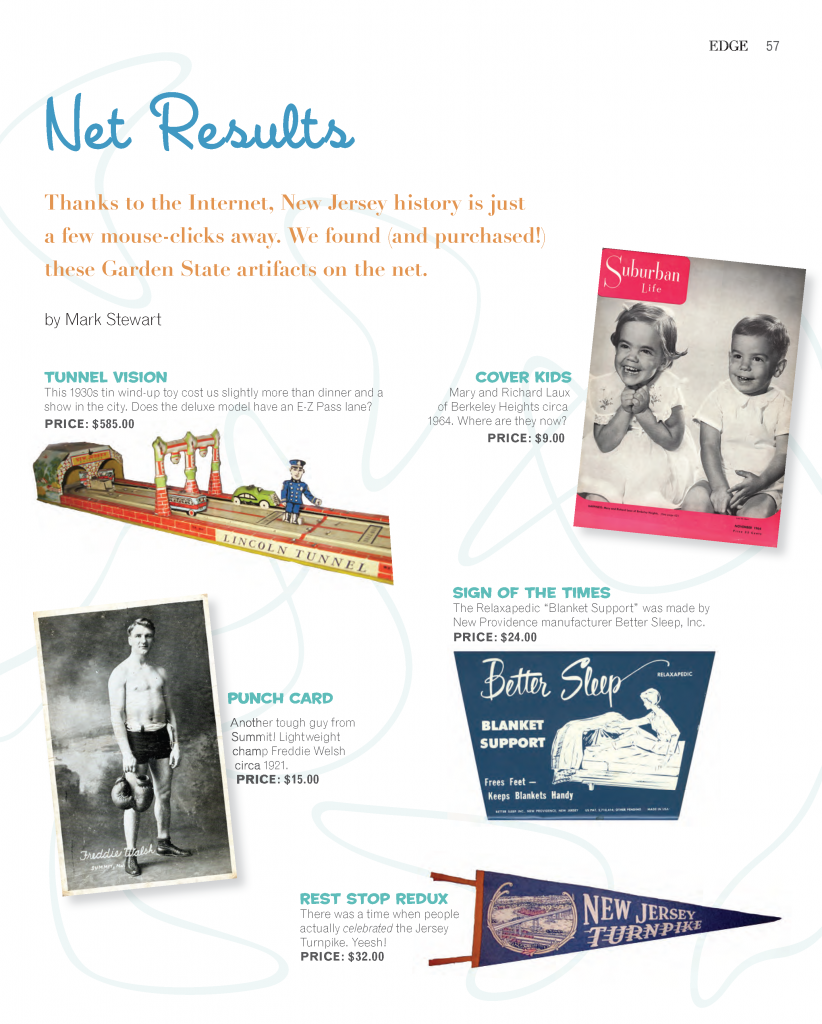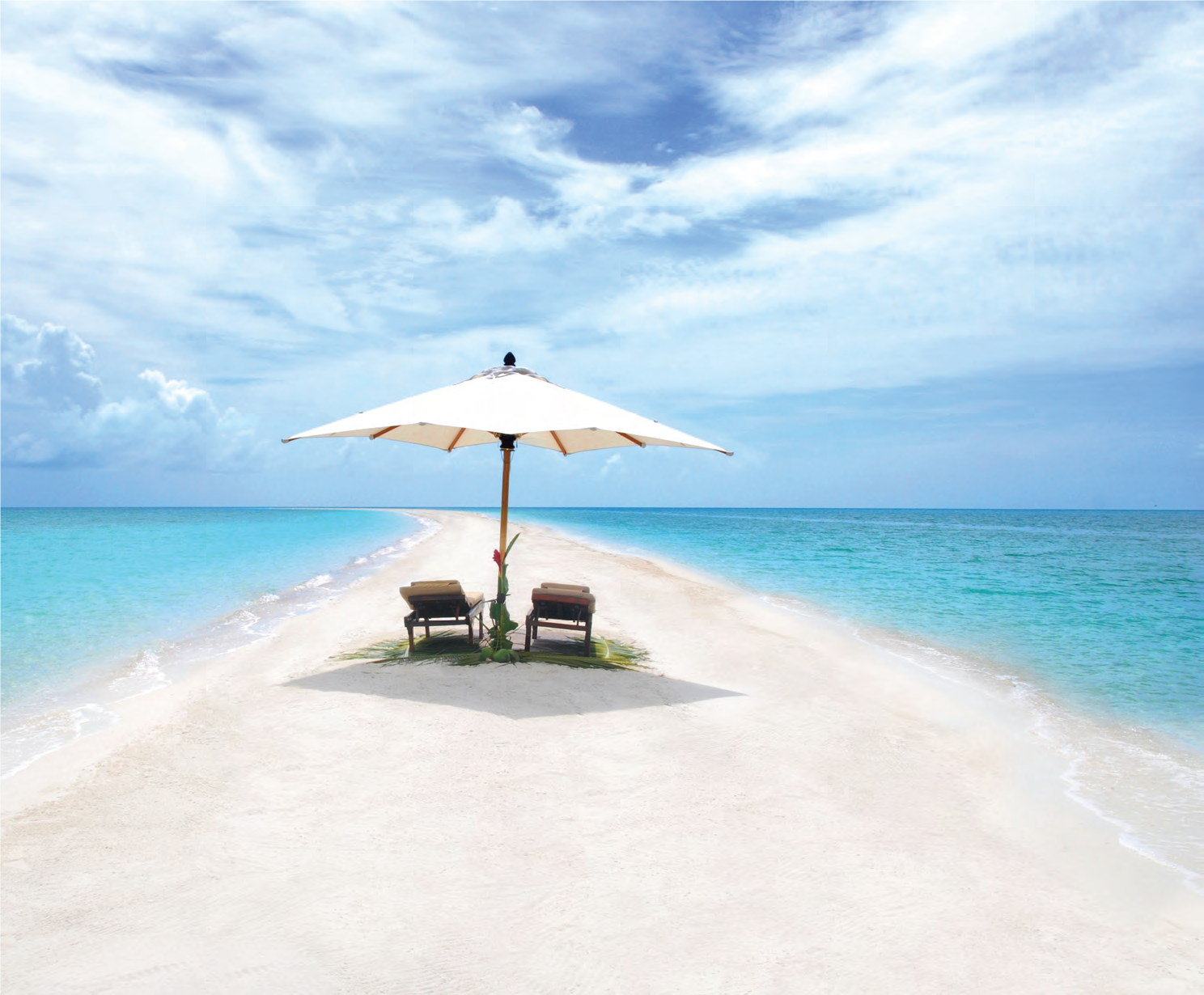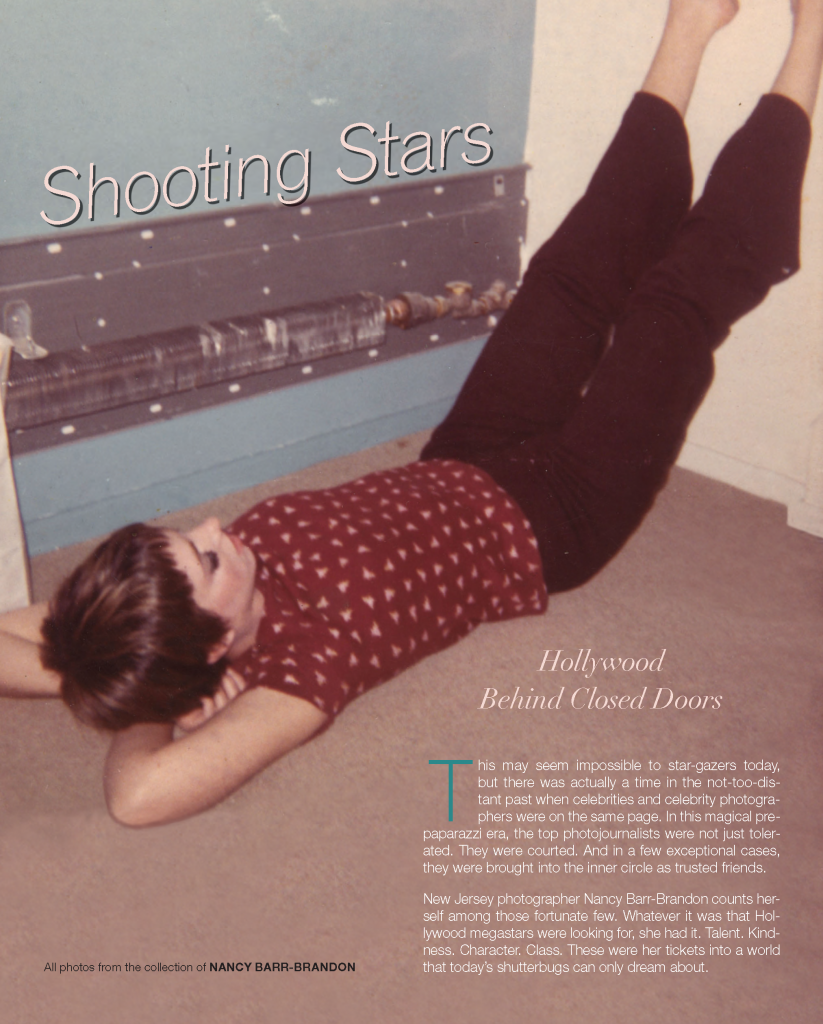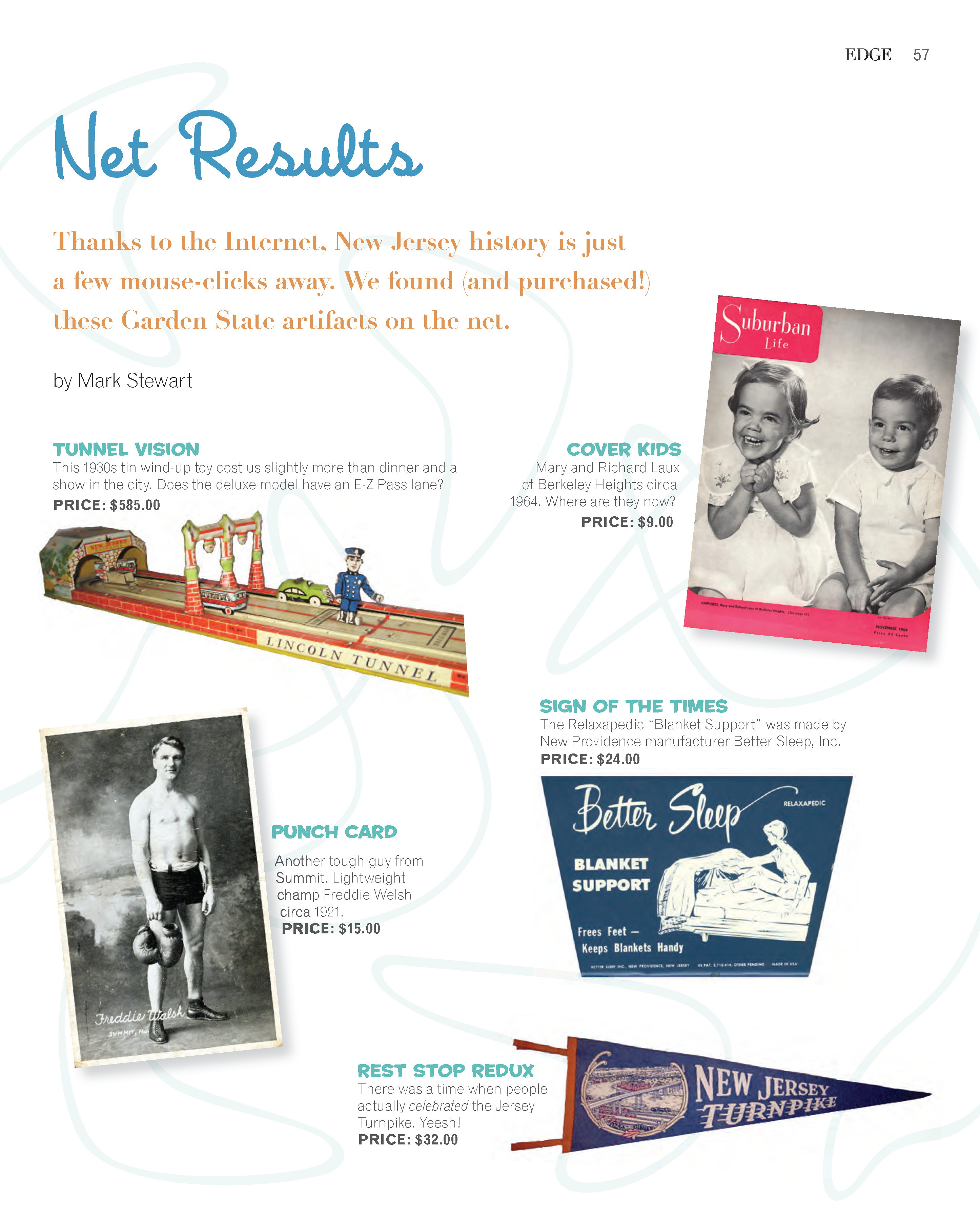Desperately Seeking Solitude
“I love tranquil solitude…” Shelley, the ill-starred poet, he of the golden pen, knew the true value of solitude. And so do we. All around, we see the vaunted worth of the priceless melt away. The most highly prized dwindles, fades into the commonplace. But solitude eludes the calipers of ordinary measure. Not easily found today. How much more difficult tomorrow? Solitude. Such a luxury. No, the new luxury. It’s the exclusive reserve of the wealthy…or the ingenious. Presented in these pages, still spared the encroachment of progress, crowds and all manner of acclaim, is a choice selection of refuges where Solitude is valued above all else.
Musha Cay
David Copperfield, who just happens to be the owner of Musha Cay in the Bahamas, modestly calls his island, “the most beautiful place on the globe.” Not for anyone who wants to rough it. Rather a refuge for anyone who unashamedly wants to be spoiled. The island is staffed by gentle folk whose pleasure it is to see that you are content, content, content…morning to night. To be left in peace. Swim in the free-form beach-side pool or fl oat the day away in the calm of the Caribbean. Take a turn at wind-surfing, a spell of snorkeling, tennis on a flood-lit court. Picnic on a different beach every day. While you’re in residence, you’re the supreme command. You can rule your kingdom in solitary splendor or share it with up to a dozen forever-grateful friends. Your modest housing is Highview, a manor house of 10,000 square feet, rimmed by mahogany decks with views of the far rim of the world. Travel to and from Musha Cay is via the island’s Twin Otter aircraft, transport deemed more than satisfactory by the likes of Robin Williams, Oprah Winfrey, Tim McGraw and….oh why go on and on. Isn’t it enough to promise that on Musha Cay you will be….well, let’s just say: Content.

Photo by Erico Hiller
Lamu
One of seven islands lying just off the east African coast. Today its political allegiance is to Kenya. Its cultural allegiance, however, is to the 15th century, when Arab traders sailed the seas unmolested and wealthy beyond all imagining. Their ways are here preserved. Revered. Life in these narrow, crooked streets moves no faster than a donkey’s pace…the same donkeys that still carry water jugs from well to dwelling. The beaches, called shela, are broad. White. Empty. The sea is limpid. Stay in a guest house, reserved for you alone. Barefoot girls, veiled in white linen, place baskets of mango and papaya on the doorstep at dawn. Feast by moonlight on the catch brought fresh from the sea by fishermen sailing the dhows built by their fathers and grandfathers. Each day is chanted into wakefulness by the imam high atop the ancient mosque. Here Swahili is the spoken word. Karibu. Welcome…welcome to Lamu.
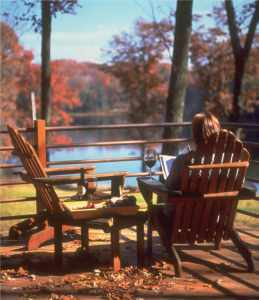
Photo courtesy of Canoe Bay
Canoe Bay
Solitude, serenity, sylvan quiet. Enshrined deep in the Wisconsin woodlands, Canoe Bay is situated on the edge of deep, glacier-formed Lake Wahdoon. Nature provides the setting. Frank Lloyd Wright provided the inspiration by which this one-of-a-kind resort takes architectural shape. Rattenbury Cottage is hidden away on a 280-acre property. Designed by one of Wright’s most astute devotees, it features the open-air layout that characterizes so much of the Great Master’s creations. A large living room with soaring ceilings, polished wood paneling and massive stone fi replace…king-bedded sleeping space, huge bathroom with two-person whirlpool spa, gleaming white oak floors, broad cantilevered deck with unimpeded lake vista…it all adds up to privacy, promised and delivered. No motor boats or jet skis disturb the lake’s tranquility. The fully equipped boathouse is at your disposal complete with kayak, canoe, paddles. The gourmet picnic basket is only a phone call away. Dine in the cottage, on its deck, or if you prefer, in Canoe Bay’s glass-enclosed lakeside dining room. Under the star-studded night skies, the call of the loons is unchanged since primeval times.
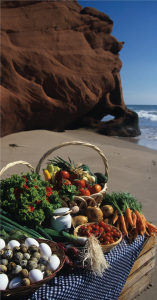
Photo courtesy of Iles de la Madeleine
Iles de la Madeleine
Adrift in Quebec’s Gulf of St. Lawrence, the Iles de la Madeleine (aka Magdalen Islands) form an archipelago some 65 miles long, bent like a fishhook…a dozen islands, home to the Acadians. Longfellow immortalized the Acadians with his well-beloved poem, “Evangeline.” But Longfellow’s Acadians fled the tyranny of Britain to settle in Louisiana. He said not a word about those who eschewed Louisiana in favor of staying in what Canadians affectionately term “the Maggies.” Theirs is a unique community….sea-faring, song-loving, proud of their heritage. Hospitable to visitors, perhaps because so few fi nd their way to these charming wave-washed specks of land. Red cliffs, green hills and golden beaches. A meterological quirk assures mild winters, warm autumns, gentle summers. The people have lovingly preserved the French of yesteryear…musical in its cadences, well suited to a pace of life unmatched in the world beyond the horizon. Here life is governed by tide and wind, by surf and wave. Once a true convent, today the Domaine du Vieux Couvent receives no more than a handful of visitors at a time. Each is settled into comfortable suites, tucked between a lighthouse and a working fishing pier. Walk the beaches in peace. Consort with seals and dolphins. Ship out to sea for the day with a pecheur who will gladly take you aboard. Feast by candlelight on freshly hauled lobster and crab…on greens grown right here in island gardens. A glass of vin ordinaire in the local café. A lesson in surf casting taught by the great-great grandson of an islander who cast into these very waters a century and a half ago. Pack a sweater, sunglasses, bathing suit. Leave behind your watch and calendar, your laptop, your cell phone. Time in the Maggies is unrelated to the time you leave behind at home.
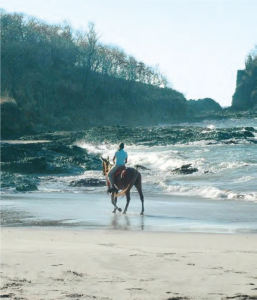
Photo courtesy of Cabo Velas
Cabo Velas
On the dry breezy coast of the Guanacaste region of Costa Rica, just north of the town of Tamarindo, that’s where you’ll find Cabo Velas. A traditional working ranch, complete with livestock and tropical orchards sprawled over 1700 acres on a secluded seaside peninsula. Yours and only yours. A week? A month? Whatever. No other guest sets foot on those 1700 acres while you’re in residence. Your life unwinds in a thatched rancho. Your large bedroom and separate dressing room open onto a beachfront verandah. Shower indoors or out. Upstairs…a second slightly smaller suite. A guest or guests? It’s your say. Swim on any of five…yes, five…beaches, each secluded by seagrape, hibiscus and palms. Snorkeling, diving, kayaking? Of course. Or perhaps a ride before breakfast along a Pacific beachfront. Dine in the Rancho Principal, a screen-surrounded dining room, edged by a two-level terrace and beyond….the salty deep. White water rafting, golf, tennis, cycling…only 30 minutes away. But really, just staying put at Cabo Velas in the heartland of Costa Rica will doubtless suit you very, very well. Cabo Velas. Olé!
Editor’s Note: For more information on these properties, log onto the following web sites: MUSHA CAY (mushacay.com); CANOE BAY (canoebay.com); DOMAINE DU VIEUX COUVENT (domaineduvieuxcouvent.com); LAMU (magicalkenya.com).
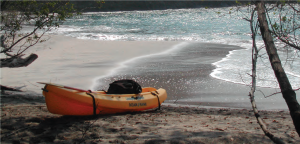
Photos courtesy of Cabo Velas
The Meyersville Inn Spices Things Up for Spring
I’ll be the first to admit it. Dining out in New Jersey can be an adventure. Pull up to the Meyersville Inn in the Morris County hamlet of Gillette and it’s hard to know what to expect. It has the look of a 19th century farmers co-op, and indeed that’s what it once was. It also could be a well-camouflaged wings and pies joint. It’s not. Like so many restaurants in the Garden State, the Inn offers an eclectic mix of pub food, steaks, seafood and Italian specialties. Unlike almost every other New Jersey restaurant, it specializes in Cajun and Creole cuisines. This taste of the Bayou comes courtesy of Chef Hoss, aka Houssain Elhady, an Egyptian- born culinary maestro who swapped his mechanical engineering degree a few years back for kitchen whites.
Elhady learned the art of Cajun and Creole cooking from the previous owner, Dan Walker, a Louisiana native. Since then Chef Hoss—whose résumé includes stints at some of the better restaurants in central New Jersey—has added a few intriguing twists of his own for the Inn’s new owners. “Creole and Cajun food isn’t as popular as other cuisines, like, for example, Italian food,” he says. “My culinary philosophy centers 21 around Creole and Cajun cuisine, and the ability to offer it to our customers. Those who have never tasted Creole and Cajun food need only try it once to experience the richness and depth of its flavors.” For the uninitiated (and the timid) there are some important differences between Chef Hoss’s menu offerings. Cajun cuisine takes a rustic approach to cooking, embracing fresh, locally grown ingredients and simple preparations. Onions, bell peppers and celery are the Holy Trinity.
This style developed from the French-speaking Acadians who were chased out of Canada following the French and Indian War in the 18th century. They settled in Louisiana and adapted their cooking to the local ingredients, i.e. anything they could hook, net, gig or trap. Crawfish were among the more abundant resources, and today they play a starring role on the Meyersville Inn menu. Much of Creole cuisine relies on the onion-pepper-celery combination, but from there it diverges significantly from Cajun. Creole is a Caribbean-influenced blend from the food cultures of France, Spain and Africa. As a rule, the French flavors are more  aristocratic than in Cajun fare. Cajun food usually has a kick to it but, contrary to popular belief, an authentically prepared Cajun dish does not involve eye-watering heat. Unless, of course, you specifically ask for it that way. If you’ve been to New Orleans and still can’t remember which is which, Antoine’s is Creole and K-Paul’s (Paul Prudhomme) is Cajun. Emeril does both.
aristocratic than in Cajun fare. Cajun food usually has a kick to it but, contrary to popular belief, an authentically prepared Cajun dish does not involve eye-watering heat. Unless, of course, you specifically ask for it that way. If you’ve been to New Orleans and still can’t remember which is which, Antoine’s is Creole and K-Paul’s (Paul Prudhomme) is Cajun. Emeril does both.
Elhady distinguishes himself from other Cajun/Creole chefs by making all of the spices and rubs used at the Meyersville Inn from scratch. This, he believes, adds to the authenticity of his food. From an ambiance standpoint, The Meyersville Inn offers a choice of two separate dining experiences. Those who prefer a more intimate setting will find the tavern, with its subdued lighting, blazing fireplace and generously stocked bar a quiet retreat from a hectic workday. Here light, classic pub food soothes and nourishes. Bayou-inspired specialties include authentic gumbo and a superb catfish sandwich.
Those who prefer to dine in a livelier setting veer toward the well-appointed dining room. Here a lighter, brighter, more spirited atmosphere provides the setting for an upscale but casual crowd, while the room’s Décor pays homage to the building’s colorful roots and history. The wide-ranging menu includes chicken, steaks and seafood, the portions are generous (hey, this is New Jersey, right?) and the wine cellar is surprisingly good. The Meyersville Inn isn’t exactly in the middle of nowhere, but for many it’s a hike. What makes it worth the trip is drifting down the Mississippi with Chef Hoss as your guide. Bring your imagination and your appetite and prepare to spend an evening on the Bayou.
Editor’s Note: The Meyersville Inn is located at 632 Meyersville Road in Gillette. (908) 647–6302. Marylou Morano is a freelance writer whose articles appear in magazines and newspapers around the state.

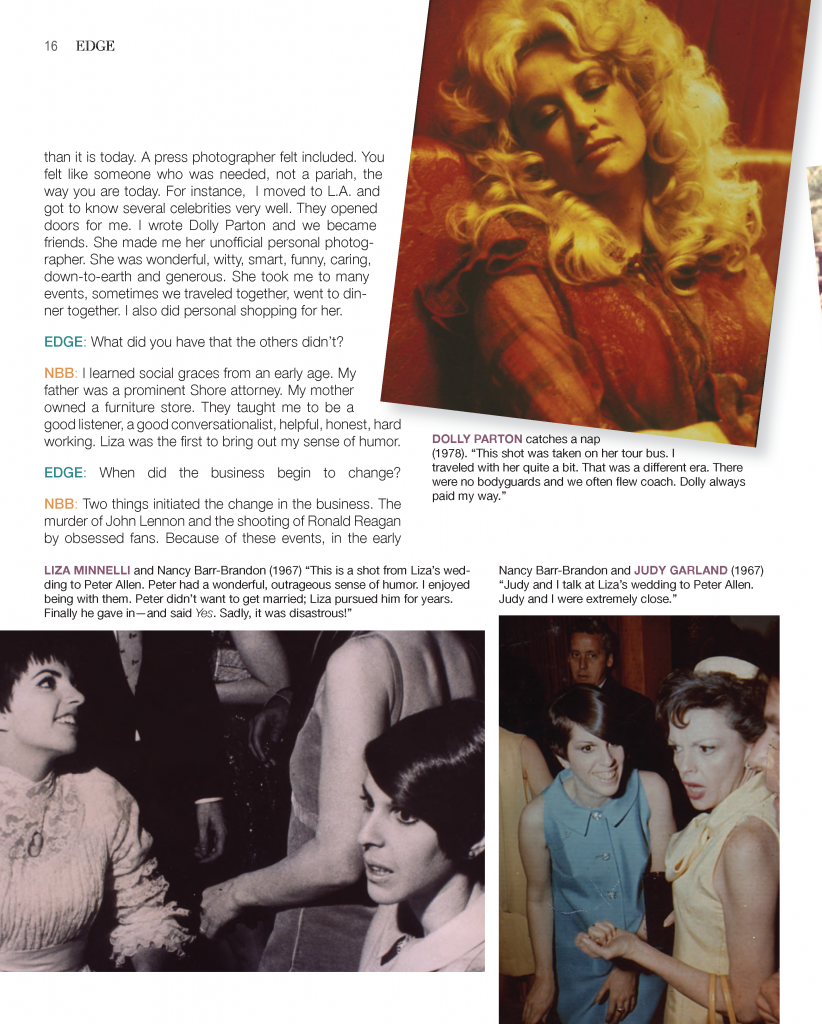
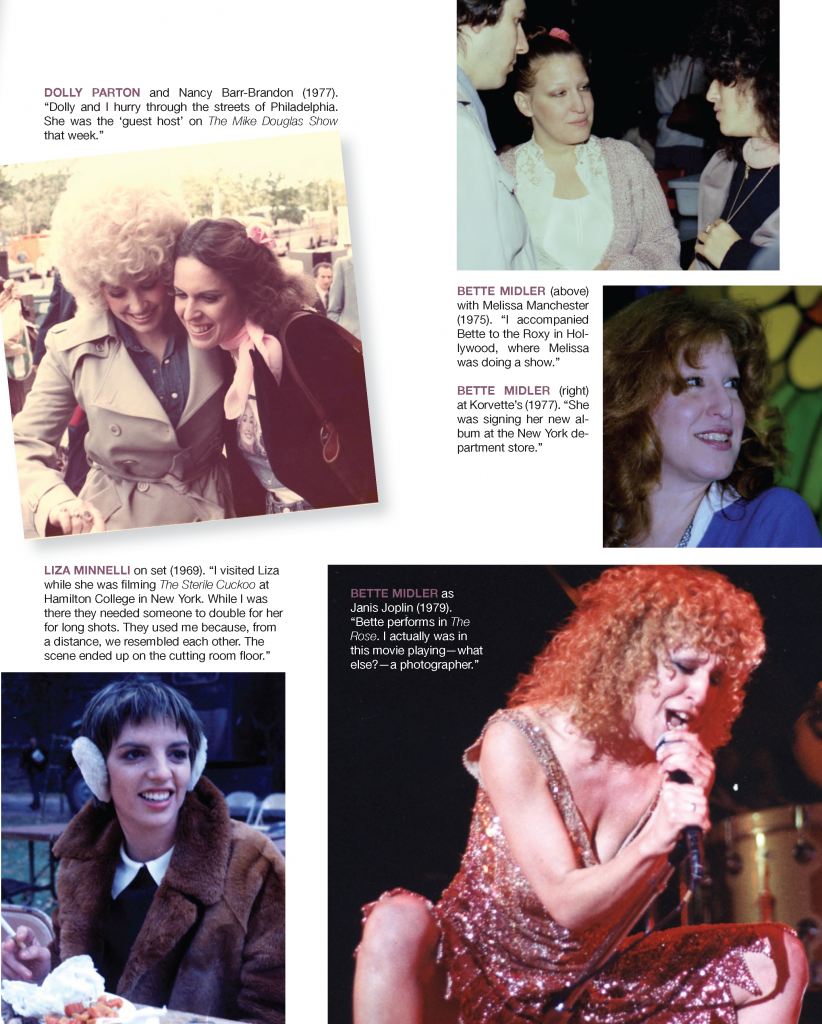

“Everyone knows someone who has lost their job… people have a lot on their minds.”Your house is worth a half-million less than it was last summer. Your portfolio is in freefall. That Christmas bonus was a little short. And you’ll be waiting a bit longer to retire. It’s enough to give you nightmares—if you could actually fall asleep. As stress rises, so does the risk of insomnia and other sleep disorders. In these trying times, more and more people will try anything to get some decent shuteye.
Unfortunately, chronic insomnia isn’t something you can make up for with a Starbucks run. Consistent sleep problems can take their toll on everything from your mood to your mortality. “There is no substitute for sleep,” says Vipin Garg, MD, Medical Director of the Comprehensive Sleep Disorders Center at Trinitas Regional Medical Center, who is board certified in pulmonary medicine and sleep medicine. “If you don’t get adequate sleep, you’re going to have consequences.” “People who have chronic sleep problems find it hard to concentrate and are often much more irritable,” adds Christopher Jagar, MD, a psychiatrist with the Department of Behavioral Health & Psychiatry at Trinitas Regional Medical Center. “It can affect performance on even the simplest tasks.”
It can lead to dozing off for milliseconds at a time, called microsleep. That can affect your ability to carry on a conversation, follow a meeting—or get behind the wheel safely. And sleeping disorders often go hand in hand with other serious health issues, which makes it doubly important to diagnose and treat them. Sleep apnea, a chronic interruption of a person’s breathing during sleep, has been linked to several life-threatening conditions, including heart attack, congestive heart failure, hypertension, obesity and diabetes. “Treating sleep apnea can not only affect the quality of your life, but also how many years you live,” Dr. Garg says. While disorders like sleep apnea have their roots in physical issues, many of us bring our nightly problems on ourselves. “Lifestyle is often a factor,” Dr. Garg says. “Using stimulants— caffeinated beverages, cigarettes, chocolate—can cause sleep problems. If the room isn’t dark enough, or if you leave a TV on, that can interfere with sleep. Engaging in some sort of stimulating activity, like an office conference, an argument or a workout, can make it hard to fall asleep.” Even something that’s often considered a sleep aid—we’re talking nightcap here—can backfire. “Alcohol may make you drowsy enough to fall asleep, but you’ll wake up again in a few hours,” explains Cheryl Krempa, RPh, MBA, Director of the Pharmacy at Trinitas.
caffeinated beverages, cigarettes, chocolate—can cause sleep problems. If the room isn’t dark enough, or if you leave a TV on, that can interfere with sleep. Engaging in some sort of stimulating activity, like an office conference, an argument or a workout, can make it hard to fall asleep.” Even something that’s often considered a sleep aid—we’re talking nightcap here—can backfire. “Alcohol may make you drowsy enough to fall asleep, but you’ll wake up again in a few hours,” explains Cheryl Krempa, RPh, MBA, Director of the Pharmacy at Trinitas.
Routine Tweaks
The upside? You may be able to cure your own insomnia with a few tweaks to your routine. Dr. Garg recommends keeping a diary of your daily activities, diet and sleep quality, to see if any patterns emerge—like a case of insomnia every time you knock down an order of crab-cakes. Or watch CNBC. Or talk to your mother. If stress is causing your sleep issues, try some common stress reducers—regular exercise early in the day, meditation, deep breathing—and take time to wind down before bed without bright lights or stimulating activities.
Even something as simple as a notebook by the bed could help you relax. “You can write down your thoughts in your diary before bed, so you’ve unloaded the problems that are keeping you up at night,” Dr. Garg suggests. If anxiety, depression or another issue is contributing to your insomnia, consult with a mental health professional. “Treating the underlying psychiatric problem usually solves the sleep issue as well,” says Dr. Jagar. Should lifestyle changes fail as a fi x, resist the temptation to load up on Tylenol PM or other sleep aids. “Over-the-counter sleep-inducing products use diphenhydramine hydrochloride, the active ingredient in Benadryl, to help you fall asleep,” Krempa says. “But they can make you feel drowsy the next day, so you’ll need more caffeine to be alert, and a vicious cycle begins.”
Instead, it may be time to see your doctor. “If you try all these techniques and they don’t work, you should see a physician to determine what could be causing it, so it can be dealt with correctly,” Dr. Garg recommends. Following diagnosis at an accredited sleep disorder center, apnea patients are often set up with positive airway pressure machines (CPAPs or BiPAPs), which keep the airways from becoming obstructed and enable a good night’s sleep. Other sleep problems may disappear after starting cognitive therapy or even light therapy, when you spend part of each morning lounging under a bright, sun-like light. Dr. Garg sometimes restricts the amount of sleep a patient gets each night to try to concentrate the sleep and avoid frequent night wakings. Still, stress-related sleep disorders can sometimes be even more difficult to overcome. “People have a lot going on right now—everyone knows someone who has lost their job. Things are dire,” says Dr. Jagar. “People who are under a lot of stress have a lot on their minds, and they often have a harder time falling asleep and staying asleep. They simply don’t feel rested.”
If the lifestyle changes and stress relievers don’t work, your doctor may be able to prescribe one of the newer medications that have fewer side effects and are less likely to cause next-day drowsiness. “There are numerous formulations out there, so it’s easier to tailor the prescription to your exact problem,” Krempa says. Some medications, like Sonata (zaleplon) and Ambien (zolpidem) wear off quickly, so they work best for people who just need help falling asleep; others, like Lunesta (eszopiclone) help you stay asleep. It may take a few tries to hit upon the solution to your sleep issues, but once you do, you’ll feel like a whole new person. “Sleep disorders affect every part of your life—you become more irritable and take it out on your loved ones, and you have a harder time enjoying the things you love when you’re fatigued all the time,” Dr. Jagar says. But after you’ve caught up on your rest, you’ll be ready to take on the world, with all of its worries.
Editor’s Note: For more on sleep and sleep disorders log onto njsleepdisorderscenter.com or call (908) 994–8694.
Four Cornerstones Make a Great Wine Collection
A solid foundation relies on its cornerstones. Webster defines cornerstone as a physical stone, often ceremonial in nature. According to Wikipedia (which, as we know, is infallible) a cornerstone can also be “a concept which provides the basic tools for understanding or manipulating a larger intellectual edifice.” The edifice here is your wine cellar, and its cornerstones are the basic elements that provide a fi rm foundation upon which to build—or extend—a great collection. Making cornerstone selections for your wine cellar can present a formidable challenge, since the choices are many and the costs can be considerable. But fear not, brave oenophile. Get squared away on these four building blocks and the heavy lifting can begin: A well-rounded white that does not need to age, but stands ready to deliver outstanding taste right now and for the entire year ’round.
An age-worthy red that does need some years to soften its tannins and firm the structure indigenous to the grape and the region.
A delightful boutique wine, whether red or white, which is a special personal discovery and will enhance your status among your cellar’s guests.
A prestigious trophy wine, one that commands respect both for itself and for you, and which endows you with extensive bragging rights among your peers. Feel free to bask away in such a venerable wine’s reflected glory. While these cornerstones are only guidelines, they certainly give you lots of room to indulge in personal preferences while expanding your collection. Your cellar is limited only by your own investment of time and money…and, of course, by the size of the cellar itself.
White Wines for Now The choices here are huge and include grape varietals such as chardonnay, sauvignon blanc, and chenin blanc. Focusing on reliable regions such as Napa, Burgundy, Stellenbosch, and Vouvray can help to optimize your search. I personally find the white Burgundies the most versatile and satisfying in this cornerstone category. These wines are a chardonnay grape, which particularly in the subzone of the Côte de Beaune, have made wine connoisseurs sit up and take notice. The soil and the climate—predominately clay and benignly temperate—work together to bring a steeliness to the wine without compromising its unctuousness or creaminess. One particular producer in the Côte de Beaune region, Sylvan Bzikot, produces some of the most amazing white Burgundies at several different sites. Bzikot’s wines can range some in price. Since this is a wine to be enjoyed right now, I would definitely choose his Bourgogne Blanc, a stunning stainless steel vinified juice punctuated by stone fruit and lively acidity.
Red Wines for Later This category probably evokes the most controversy among serious wine enthusiasts. The battle rages over whether the best are Italian, French, Australian, or our own domestic reds. In all cases, the grapes of these wines (for example, the cabernet sauvignon, nebbiolo, syrah, and malbec) have thicker skins and possess innate properties that lend themselves to the aging process. By laying down the wine, time allows a new set of aromas and tastes to develop that differs from the wine’s inauguration. A velvety soft structure and complex fruit flavors evolve within age-worthy wines, hence the fatal attraction for red wine lovers. My favorite among the age worthiest is a really big red, Dal Forno Amarone. This is a wine comprised of several grapes indigenous to the Veneto region of Italy that are known for their power, structure and tannins. After a decade or more of aging, the other irresistible qualities of this wine are the amazing taste and aroma that spring forth from each glass to caress your senses. This beauty may be hard to come by, but it is certainly worth the effort.
Boutique Wines Whenever Boutique wines by definition are small production, hard to get and typically not very well known or popular… at least not at the time of your purchase. In fact, that is most of their charm. Wines in this category can tickle your fancy and sing to you like no others. The romance begins with the chase and blossoms with the wine’s delightful character and taste. My recommendation here has been one of my favorites for years. It is from the Brogan Cellars, a winery run by Margi Wierenga in the Dry Creek Valley of Sonoma, CA. Margi is the daughter of Burt Williams of William Seylem fame. By virtue of her father’s contacts, Margi has secured grapes from some of the most exalted vineyards in the U.S., recognized for their pinot noir production. Each year, she makes perhaps 25 cases from each of several different locales, the best of which I believe is the Russian River Valley, an area famous for the incredible strawberry and raspberry notes of its pinot noirs.
The Trophy Wines Forever Herein lie the Monsters, the Bad Boys, the true Princes of your wine cellar! A trophy wine will cost you, but if you choose wisely it will always be worth the price. After fl aunting your pride of ownership and you are finally sitting in front of a glass of this divine nectar, you will understand why it is called a trophy. Although such a wine might technically qualify in some ways as a boutique wine, most boutiques will never command the ratings and recognition of these masterpieces. A true trophy wine is a pride-filled selection, one that should be reserved to celebrate only the most auspicious occasions… perhaps a wedding, a birth, a market rally or even a hard-earned bonus (no matter how diminished in these trying times). My unrivaled selection here may surprise many, since it is not on the popular wine buyers’ radar. I nominate Chateau d’Yquem, the ultimate dessert wine produced by French wine-making masters. The wine is made only in spectacular years and consequently garners accolades from the moment it is mis en bouteille. The price is commensurate with the quality. Having had the privilege of imbibing this delicately sweet perfection after an especially memorable dinner, I can still recall my reaction to the very first sip: There was a pregnant pause and then I slowly lifted my glass to the heavens in heartfelt thanks. Nothing could have been more perfect. The trophy wine, whatever your selection, will always be the ultimate cornerstone and the crowning glory of your collection.
Mike Cohen owns the Wine Concierge (www. gourmetwc.com). He specializes in locating hard-to-find wines for customers in New York and New Jersey.


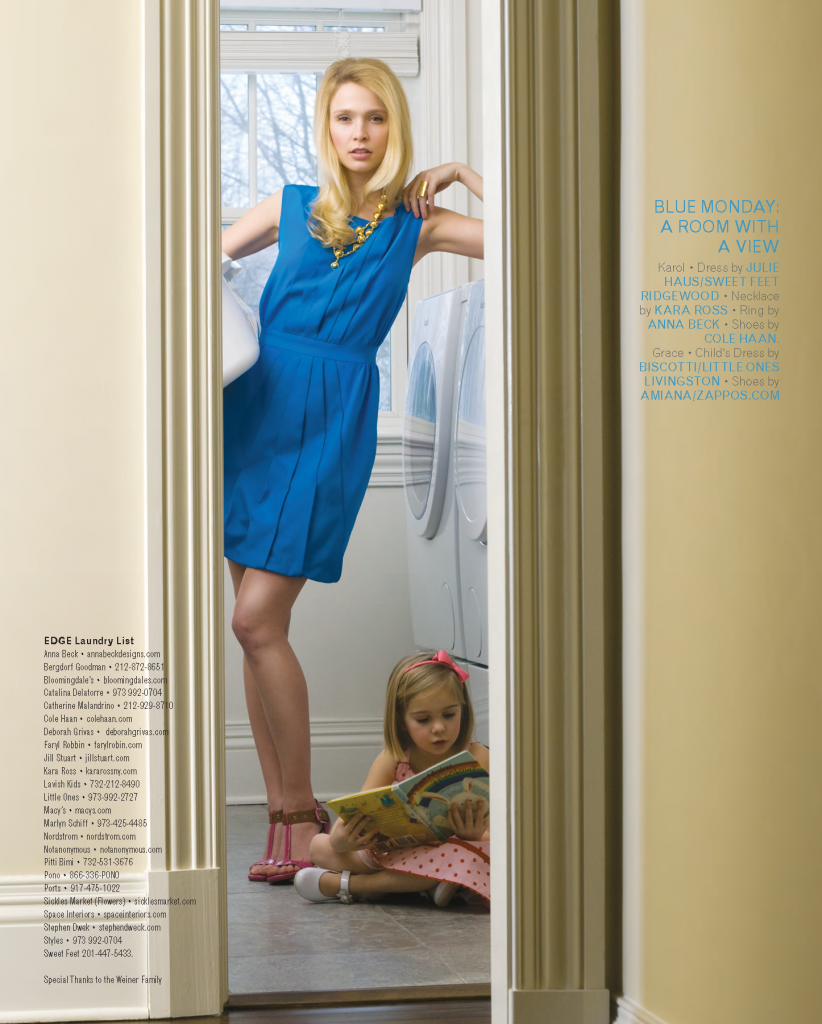

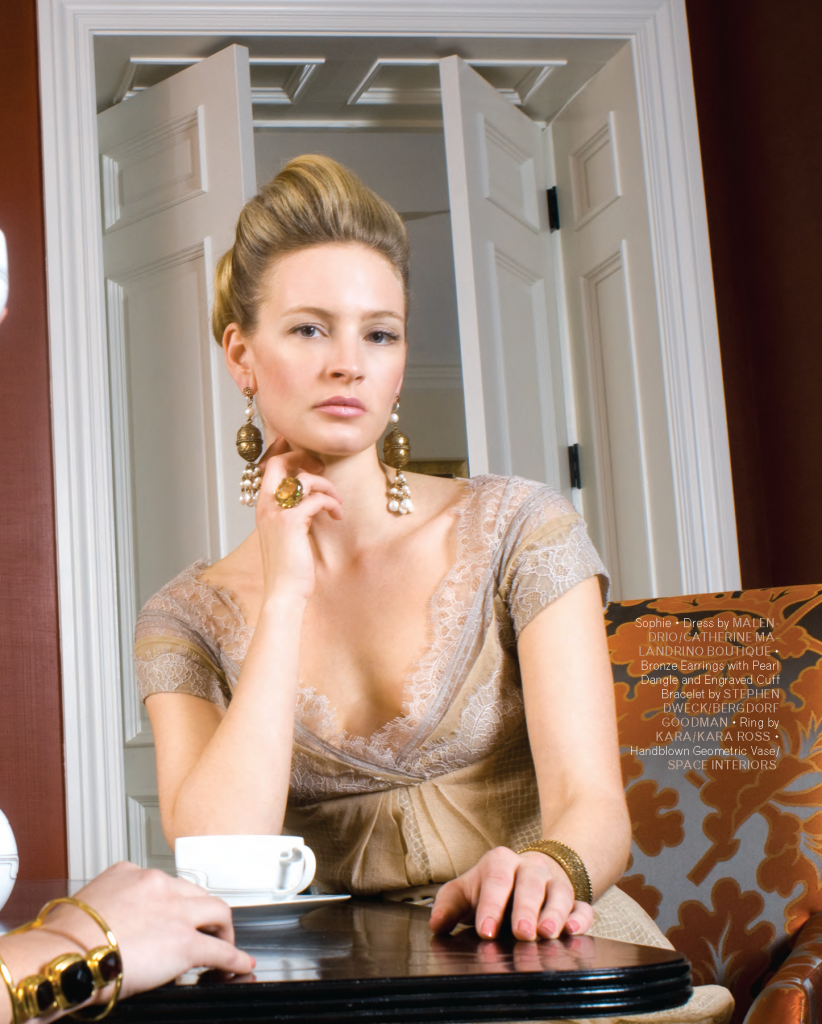
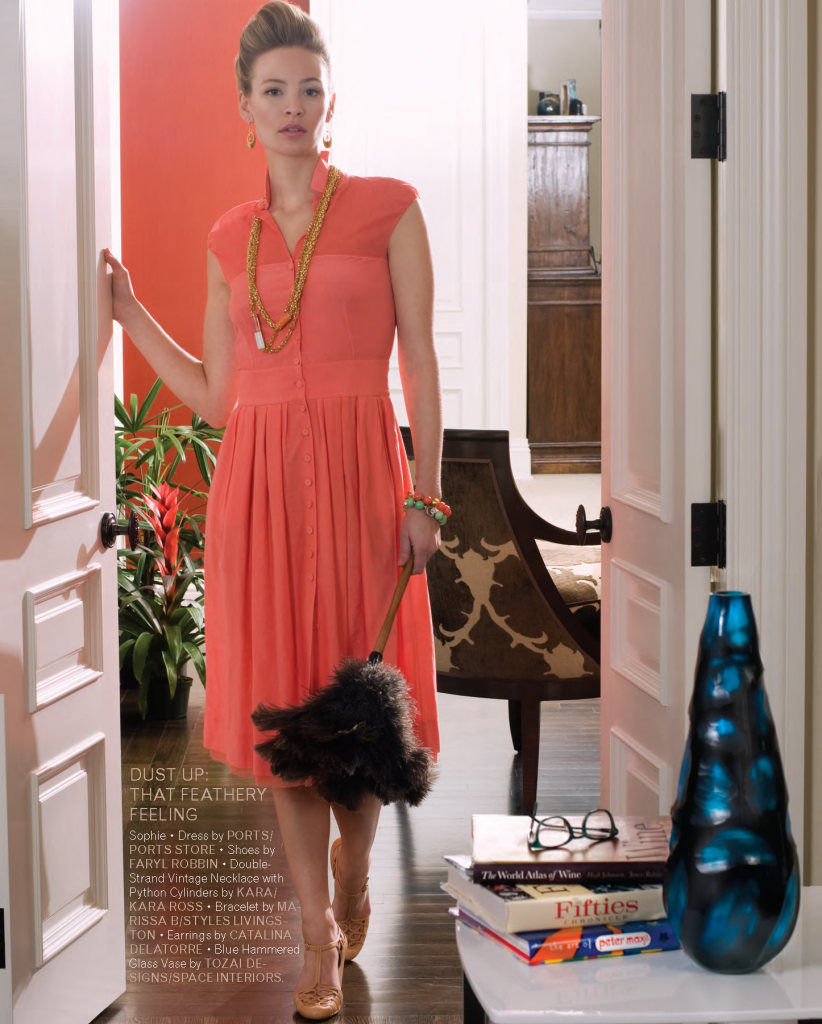


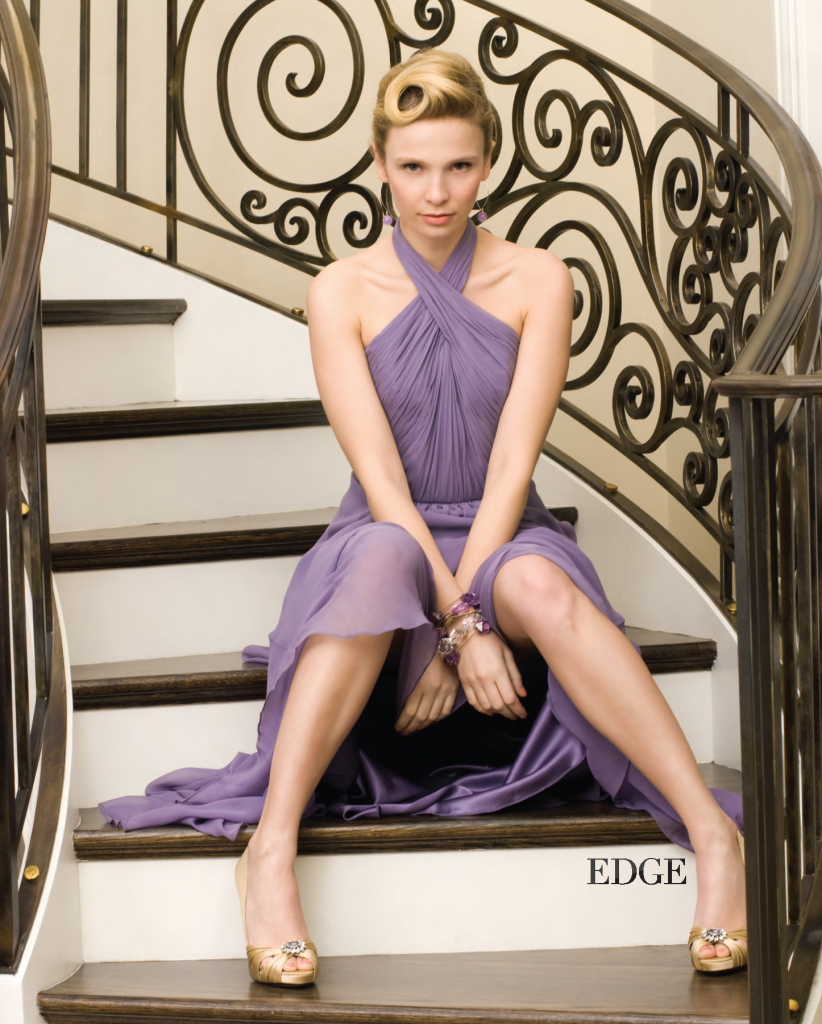
Timing is everything. NORMA KAMALI knows a thing or two about that. She shook up Madison Avenue in the 60s, put the first Pull Bikini on Christie Brinkley in the 70s, pioneered fashion video in the 80s and Internet shopping in the 90s. In 2008, Kamali launched what might just be the best-timed fashion line ever—a timelessly styled and budget- friendly collection for Wal-Mart. Her Spring 09 offerings are right on the money. Norma Kamali has always followed her own path. As this chat with EDGE confirms, she is at her best when her plate is full…and even better when it’s overflowing.
EDGE: Are you as excited about Michelle Obama as others in the fashion industry?
NK: I am. She is wearing affordable clothes. That is the best fashion statement.
EDGE: In a tough economy, sometimes you have to eliminate a couple of pricey items from your shopping list. What is the one thing a stylish consumer absolutely, positively cannot do without?
NK: If she is stylish, she really has everything, and doesn’t need anything else. However, styles at a price—and carefully chosen—can be a spirit-lifter. Anything expensive and not timeless might make you feel guilty or irresponsible.
EDGE: Last year you designed the costumes for Twyla Tharp’s ballet Rabbit and Rogue. What drew you to this project?
NK: I had worked with Twyla Tharp on a number of different productions. One being The Upper Room. Twyla came to me with the Rabbit and Rogue project as the evolution to this classic piece. The Upper Room is such a success. What drew me to this new project? It was the next wave of The Upper Room.
EDGE: What part of this production influenced you most during the conceptual process—the music, the movement, a dancer, a character?

Photo courtesy of American Ballet Theatre
NK: The concept of dark to light. The speed of the music. The type of music, film music. The music influenced the speed of the dance. Danny Elfman’s music came first and then these visual concepts. My concept for the costumes was to take the dark to light by using black, then silver, then white. I wanted to keep the color concept of silver from the beginning to the end. Brad Fields’s lighting design used the dark-to-light concept as well.
EDGE: Did Twyla coordinate your efforts?
NK: Yes. It’s a process. I would create a costume, the dancer would try it on, we’d tweak it, keep evolving it, until it worked. It’s a lot of fun, building on steps, like a painting or any creative project.
EDGE: Did you approach Rabbit and Rogue in a similar way to your runway shows and collections in terms of practicality? Drape, flexibility, breathbility, etc?
NK: Absolutely. First I figured the colors then I built on it. The way I approach something is to start, then edit and change, edit and change. The product just gets better and better that way. I would do a fitting and take photos with my IPhone. Twyla would look at them and write or call me back.
EDGE: Is designing costumes for a ballet different from designing for a musical on Broadway?
NK: I like dance a lot. It’s my preference. I’m not as excited personally with musicals or other Broadway forms. Other people do that really well. With dance I have an open palette. There’s a more creative spirit to it. It’s more fluid, less defined to a story line.
EDGE: You are a world-famous multi-tasker. What’s on your plate as 2009 starts to unfold?

Photos courtesy of Norma Kamali, Inc.
NK: Anything that relates to the new economy. I like to reinvent and think out-of-the-box.
EDGE: Can you sum up the inspiration for your Spring 09 line in a couple of words?
NK: Yes. Timeless style.
Editor’s Note: Special thanks to Leah Soltas for making this interview happen. To see Norma Kamali’s new collections log onto normakamali.com
Looking like a star is worth every penny
Heatproof Yourself Like the Stars
The allure and glamour of Hollywood is something that will always define and inspire stylish culture. When summer weather turns hot and heavy (and it certainly does here in New Jersey), droves of people flock to darkened cinemas more than any other time of the year. After a long, dehydrating day at the shore, there’s nothing better than settling into a big, comfy seat in a vaulted, air-cooled theater to watch your favorite flawlessly put-together movie star perform in front of the camera. That may well be the secret star quality of all big-screen idols—they always manage to look so cool, literally and figuratively.
You’ll never see George Clooney sweat, Kate Hudson’s t-zone get shiny, or Julia Roberts’s curls frizz. There’s no doubt that having skin, hair, and makeup experts on call for minute-by-minute touch-ups is essential for movie icons to stay camera-ready at all times. I myself, however, while shooting some scenes for my television show, have had to rely on my own quick fixes and ever-ready products to work their magic. After some arm-twisting, the EDGE editors have convinced me to divulge a few of my closely guarded secrets. The truth is, there are tons of ways to keep yourself in camera- ready condition (even when off-film).
The ones I have chosen to share with you will easily get you through any heatwave looking as flawless as Catherine Zeta Jones on her best day. Light hydration is key. Shy away from heavy moisturizers that in summer heat will transform that healthy matte finish on your skin into a shiny, mirrored surface. Instead, always keep an EVIAN MINERAL WATER SPRAY in your bag. Although this spray has been around forever, it’s still an industry staple that manages to keep skin looking supple, not slippery. The spray comes in a handy 5-oz. size and retails for around $10. When the heat and humidity get a little out of hand, it’s always a great idea to keep blotting sheets at hand. Although they say the camera adds at least 10 pounds, a sure-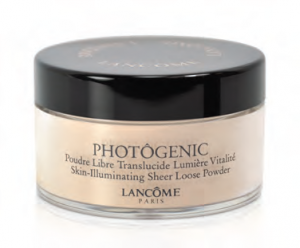 fire way to keep your face looking trim and contoured is to eliminate any shine. After shooting for eight hours in 103-degree, dense New Orleans heat, I found that DIOR’S BLOTTING PAPERS ($21) were a total and complete lifesaver.
fire way to keep your face looking trim and contoured is to eliminate any shine. After shooting for eight hours in 103-degree, dense New Orleans heat, I found that DIOR’S BLOTTING PAPERS ($21) were a total and complete lifesaver.
Not only do the sheets wipe away shine, they come with their own mirror and are treated with a light fragrant powder that adds a matte finish to even the most reflective of t-zones. As far as light makeup is concerned, PHILOSOPHY’S THE PRESENT ($25) is a true gift in any season, but particularly useful during summer. Made with natural antimicrobial agents, The Present literally forms a barrier over your skin that both locks in moisture and blocks out environmental impurities. Sound too good to be true? It’s not.
Simply rub a dime-sized portion of The Present on your clean face every morning before applying any other makeup and your skin will literally appear flawless all day long—I promise! As a final step to finish your face, most makeup artists recommend a quick brush-over with a loose powder. LANCOME’S PHOTOGENIC SHEER LOOSE POWDER ($32) is a dream come true. With a large blush brush, gently dust your face and neck with light powder, then follow up by blotting around your nose and under your eyes with CHANEL’S MAT LUMIERE foundation ($52). If, perchance, you spot a dreaded blemish, CHANEL’S PRO LUMIERE CORRECTEUR PROFESSIONAL FINISH CONCEALER ($38) is a quick and easy fix.
I shouldn’t have to tell you this but it’s worth a reminder: make sure your foundation and concealer perfectly match your skin tone. When choosing a base or cover-up, it’s critical to test the makeup against your skin in natural light. Fluorescent lighting can so drastically skew color perception that you just might end up looking more like Marcel Marceau than Marilyn Monroe. On a final note, hair has always caused the most problems for me personally on film. I’m one of those people with insane, schizophrenic hair—something like Zeppo Marx meets Alfalfa from The Little Rascals. While shooting,
I always keep a travel-sized can of L’OREAL ELNETT SATIN FLEXIBLE HOLD HAIRSPRAY ($16) on the set. The Elnett line is a hair lacquer that doesn’t overload the follicle with fragrance or dry it out with tons of extra alcohol. This particular spray manages to be light, yet nourishing with a bouncy, non-static hold. Believe me, if it can keep my hair in check, it will work wonders for you. By applying these simple cosmetic fixes and stocking up on the recommended products, you’ll be able to get yourself camera-ready in no time. Most importantly, remember that a natural, healthy glow is the order of each and every day. With these simple tips, you will easily put your best face forward through any heat wave. Keep your personality as light as your moisturizer and makeup and you’ll discover, soon enough, how to not shine…like a true star!
Editor’s Note: Dan Brickley was the host of TLC’s A Makeover Story for three seasons. He has authored numerous articles on fashion and beauty.


Atlantic City’s hottest hotels are sparing no expense when it comes to pampering their guests. The newest battleground for business is skincare—and the big winner may be you.

There is certainly something to be said about the soothing effects of being near the ocean. The air is cleaner. Breathing comes easier. Blood pressure, elevated by a hectic workweek, eases downward. For some, rejuvenation comes with a winning hand of Texas Hold ’Em. For others, the j ackpot is waiting at one of AC’s world-class spas, where skincare regimens play a major role in relieving the outward signs of stress—and the hotels leave little to chance. “We’re the newest spa in Atlantic City,” says Jane Mackie of the Chelsea Hotel’s Sea Spa. “The décor is retro—close to nature. There’s an opportunity to do natural and healthy treatments here.”
ackpot is waiting at one of AC’s world-class spas, where skincare regimens play a major role in relieving the outward signs of stress—and the hotels leave little to chance. “We’re the newest spa in Atlantic City,” says Jane Mackie of the Chelsea Hotel’s Sea Spa. “The décor is retro—close to nature. There’s an opportunity to do natural and healthy treatments here.”
Sea Spa offers a variety of facial and body treatments— everything from nurturing and strengthening delicate skin to nourishing and calming rough skin by deep-cleansing to a silky-soft texture. Sea Spa’s signature treatment is a full-body Mediterranean Veggie Wrap, which makes you feel good on the outside and actually nourishes you on the inside. Extracts found in a typical Mediterranean garden are blended to smooth, tone, and elasticize the skin. At the other end of the island, off White Horse Pike, is the 36,000-square foot Immersion (left), perched atop the awe-inspiring Water Club.
Brennan Evans is the Spa Director of this harmonious space where soothing water features and Asian-inspired elements and textures blend to provide an atmosphere of total tranquility. “Being close to the shore, it’s all about beautiful skin,” claims Evans. “We have skincare services that include the use of hyperbaric oxygen as an infusion method for transporting serums into the skin to help reduce fine lines and smooth pigmentation. This allows for immediate results with no down-time for recovery. Ayurvedic skincare treatments can be customized to your personal dosha through a simple questionnaire and mini-consult with our estheticians.”
Immersion also features stimulating body exfoliating and moisturizing sessions that take advantage of modern technologies such as heated hamman/vichy tables and cocooning dry-fl oat, soft-pack tables. bluemercury (below), founded ten years ago by Marla Malcolm Beck, is located in the Quarter at the Tropicana. The spa draws many clients who make special trips from New York, Philadelphia, and D.C. looking for resultsoriented treatments and products. Products such as Kiehl’s Shaving Cream, Bumble & Bumble Seaweed Shampoo, and Dermalogica Active Moist Moisturizer are best-sellers. “And given that we have the beach in Atlantic City,” says Beck, “sunscreens are always popular.” bluemercury recently added a new brightening facial to its menu. “An intense, vitamin C firming treatment,” Beck explains, “this facial is amazing because you come out feeling like someone just tightened your skin. I also adore our luxury body treatments, which are almost two hours of pure pampering and massage. Our ‘Coconut Escape’ is our most popular.” bluemercury also unveiled its first Ultimate Skincare Guide. “What we try to do,” says Beck, “is make sense of the world of skincare products, which can be quite confusing. There are informative sections about what certain ingredients, like vitamin C and vitamin A, really do.”
The guide is available to all visitors and also online at bluemercury.com. The 16,000-square-foot Qua Baths & Spa, located on the fourth floor of the Ocean Tower at Caesar’s, impresses the moment you enter its doors. As Robert Seibel explains, “We attack your senses immediately. Our concept is to have you leave all your problems outside.” Qua Baths & Spa features Organic Spa Therapies with a focus on eliminating toxins. The body itself does not produce most toxins, notes Seibel. Rather, they tend to come from poor habits such as an unhealthy diet, smoking, and excessive drinking—all of which destroy new cell growth. Ocean Sp ray Organic Treatments, including the Body Renewal & Detoxification Therapy, Organic Firming Massage, and Organic Facial, utilize key ingredients in sea salts and seaweed, which rank among the purest form of therapeutic organic substances. Seibel also shares with clients his concerns regarding certain skincare products. “Many facial products may smell nice, but many people, whether they know it or not, may be allergic to them.” He recommends the Spa’s Organic Facial, noting that it works for those with sensitive skin and folks wanting “something different.” Every day you leave the house, you’re rolling the dice when it comes to the health of your skin. So how ironic is it that the one place you can’t lose is the gambling capital of the East? Just another reason to adore New Jersey.
ray Organic Treatments, including the Body Renewal & Detoxification Therapy, Organic Firming Massage, and Organic Facial, utilize key ingredients in sea salts and seaweed, which rank among the purest form of therapeutic organic substances. Seibel also shares with clients his concerns regarding certain skincare products. “Many facial products may smell nice, but many people, whether they know it or not, may be allergic to them.” He recommends the Spa’s Organic Facial, noting that it works for those with sensitive skin and folks wanting “something different.” Every day you leave the house, you’re rolling the dice when it comes to the health of your skin. So how ironic is it that the one place you can’t lose is the gambling capital of the East? Just another reason to adore New Jersey.
Editor’s Note: For more information call Sea Spa (800) 548-3030; Immersion (800) 800-8817; bluemercury (609) 347-7778 and Qua Baths & Spa (609) 343-2400.
